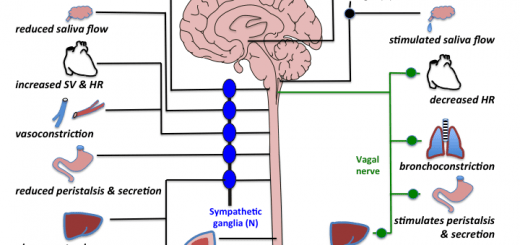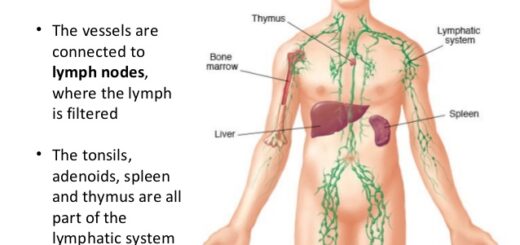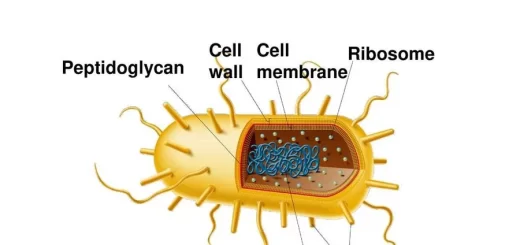Homeostatic control mechanisms, Positive and Negative feedback mechanisms
The human body consists of many systems such as cardiovascular, respiratory, nervous etc., each system is made of organs; each organ is made of tissues, which in turn are made up of cells. The cell is the fundamental living unit of the body. However, many cells of the body differ from one another, all of them have certain basic characteristics that are alike. Every cell is adapted to perform one or a few particular functions.
Composition of the human body
Water
About 60% of the young adult male body weight is fluid. A man, who is weighing about 65 kg, has total body water (TBW) = 40 liters. However, the amount of body water decline with age and is affected by the quantity of body fat.
TBW (40L) is subdivided into Intracellular and Extracellular. Intracellular: inside the cells (ICF), it is about 2/3 of the total body water (25 liters), Extracellular: outside the cells (ECF): it is about 1/3 of the total body water (15 liters).
ECF is further subdivided into Interstitial and Intravascular. Interstitial (between the cells) into the tissue spaces (12 liters), Intravascular (inside the blood vessels) is the blood plasma (3 liters). Transcellular (500ml) is found in special compartments in the body such as in the pleura, and in the joint cavities.
Proteins
18 % of the bodyweight is a protein that is found in the structure of all tissues, but the largest amount is found in skeletal muscles.
Fat
15% of the body weight is fat which constitutes the main energy stores of the body, found around abdominal viscera, in subcutaneous tissues, and in the structure of the central nervous system. and the structure of cell membranes contains Phospholipids.
Minerals
7 % of the body weight is minerals, which are present in relatively small quantities with the exception of calcium. Minerals and electrolytes concentrations in the intracellular fluid are different from those in extracellular fluid. There are special mechanisms for transporting ions through the cell membranes that maintain the ion concentration differences between the extracellular and intracellular fluids.
Homeostatic control mechanisms
Homeostasis is the ability of the body to maintain nearly constant conditions in its internal environment inspire of changes in the surroundings. all organs & tissues of the body perform functions that help maintain homeostasis. The homeostatic mechanisms are the regulatory mechanisms that tend to correct any deviation from normal in response to changes in the external or internal environment.
Each cell benefits from homeostasis, and in turn, each cell contributes its share toward the maintenance of a constant internal environment e.g. body temperature. If one or more systems of the body lose this function, all the cells of the body suffer. Moderate dysfunction leads to sickness whereas extreme dysfunction leads to death.
The control systems of the body
The disease is often considered to be a state of disrupted homeostasis. The body depends mainly on two major control systems for the regulation of all its functions; the nervous and endocrine systems. Many interrelationships exist between the endocrine and nervous systems. The nervous system is responsible for the functions that need rapidity of execution, e.g. applying a hot object to the hand causes immediate flexion of the arm to withdraw it from such harmful hot object.
Sensory receptors can detect the state of the body or the state of the surroundings. The human brain can store the information, generate thoughts, create ambition, and determine the reactions that the body performs in response to the sensations, suitable signals are transmitted through the motor output portion of the nervous system.
The autonomic system is an important segment of the nervous system. It can control many functions of the internal organs, including the pumping activity by the heart, movements of the gastrointestinal tract, and secretion by many of the body’s glands.
The endocrinal system is composed of many endocrine glands and several organs and tissues that secrete chemical substances called hormones into the bloodstream, Hormones are transported in the extracellular fluid to other parts of the body to help regular cellular function.
The endocrine system is concerned with the functions that do not need rapidity of execution e.g. thyroid hormone increases the rates of most chemical reactions in all cells and Insulin controls glucose metabolism.
Characteristics of Control Systems
All homeostatic control mechanisms have at least three main components:
- The first component, the receptor is a sensor that detects a change in the surrounding environment, which is the stimuli, and responds by sending the information (input) to the second component, The input flows from the receptor to the control centre along the so-called afferent pathway.
- The second component, the control centre, which determines the exact setpoint, analyses the input it receives from the receptor and then determines the appropriate response.
- The third component, the effector provides the means for the center’s response (output) to the stimulus. Information flows from the centre to the effector along the efferent pathway.
The results of the response then feedback to affect the stimulus, either depressing it (negative feedback) so that the whole control mechanism is shut off or enhancing it (positive feedback) so that the reaction continues at a faster rate.
Negative feedback mechanisms
Most homeostatic control mechanisms of the body act as negative feedback. When some factor becomes excessive or deficient, the control system initiates a series of changes that return it back toward a certain mean value. In negative feedback, the output response is opposite to the stimulus, and shuts it off or reduces its intensity.
There are hundreds of negative feedback mechanisms that operate in the human body, e.g. with increase activities of the cells, the concentration of carbon dioxide in the extracellular fluid increases. Carbon dioxide stimulates the rate of breathing, then it is washed out by the lungs. And in turn, decreases the extracellular fluid carbon dioxide concentration. In other words, the high concentration of carbon dioxide initiates that decrease its concentration toward normal.
Positive Feedback Mechanisms
The response enhances the original stimulus in positive feedback mechanisms, The response proceeds in the same direction of the initial disturbance, causing the deviate further from its normal range. The positive feedback mechanism is often referred to as “cascades”. The positive feedback is better known as the “vicious cycle”.
Childbirth is a positive feedback mechanism. When uterine contractions become strong enough to push the baby’s head through the cervix, the stretched cervix sends signals to the pituitary gland to secrete the oxytocin hormone, that circulates in the blood to reach the uterine muscles causing even more powerful contractions. Thus, the uterine contractions stretch the cervix, and the cervical stretch causes stronger concentrations. When this process becomes powerful enough, the baby will be born.
Homeostatic Imbalance: Homeostatic is so important that most of the diseases can be regarded as a result of its disturbance, a condition called homeostatic imbalance.
Integration of body functions
There is a functional relationship between the systems of the body. such as during muscular exercise, many systems increase the oxygen needs of the active muscles and remove the waste products such as CO2 and the heat liberated during exercise, and enable the muscles to act for a long time without fatigue.
- Cardiovascular changes: The functions of the heart are increased. The blood which carries the oxygen & nutrients to the active muscles and removes the waste product from it is also increased.
- Respiratory changes: There is an increased rate of respiration. This will increase oxygen delivered to the body and wash excess CO2.
- Temperature regulation: During muscular exercise, heat production is increased, which stimulates heat loss mechanisms.
- Muscle coordination: During muscular exercise, the adjustment & smoothness of movements are obtained via certain parts of the brain.
Productive organs, Germ cells, Fertilization, Stages of cleavage, Implantation & Decidua
Placenta types, structure, function, development & abnormalities
Fetal membrane layers, Chorion, Amnion, Yolk sac & umbilical cord
Second & third week of Embryonic development, Chorion & types of Chorionic villi



